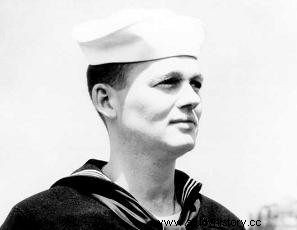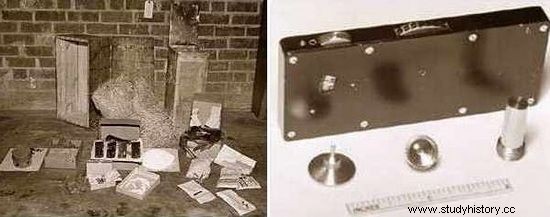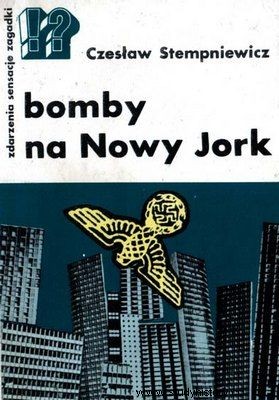b> 60 years before the New York attacks of September 11, 2001, a similar operation was intended by Nazi Germany. The operation, which in its assumption had the features of a classic terrorist attack, was given the code name "Pastoriu
It is impossible to clearly identify the initiator of the attack on the USA. The FBI suggested that the order could have been given by Adolf Hitler himself . According to another account, the head of the Abwehr, adm. Wilhelm Canaris.
The entire action was to be organized by the 2nd Abwehr Department, which supervised special operations and sabotage activities.
The greatest terrorist action in history
The preparations were led by Lieutenant Walter Kappe. This officer knew the United States very well. He spent several years there before the war, active in the German-American Bund, which was in fact an extension of the NSDAP, located on the American continent. This enabled him to thoroughly infiltrate the local community of German emigrants and recruit the right people for future actions.
Candidates for the top-secret task were searched for among people deported from the US shortly after the attack on Pearl Harbor. Twelve were selected from among thousands of men. They were placed in the Abwehr center near Berlin, where they were trained in sabotage. There, too, Lt. Kappe acquainted his subordinates with the objectives of the mission.

Chief of the Abwehr, Admiral Wilhelm Canaris. According to one version, he was the originator of Operation Pastorius.
The saboteurs were to hit the most sensitive points of American cities:power plants, gas plants, bridges, public utilities, subway stations. The hardest blow was to fall on New York. While the World Trade Center did not yet exist in 1942, there were also goals of great symbolic importance.
The Germans did not care only about material damage. They were counting more on the psychological effect of the whole undertaking. They wanted to cause mass hysteria in American society, a psychosis of fear.
The saboteurs are getting ready for a murderous blow
By attacking targets in the seemingly safe, untouched continental United States, they also intended to undermine the confidence of American citizens in the government administration.
If the operation were successful, it would probably overshadow even the Japanese attack on Pearl Harbor with its scale and effects . Industrial buildings and skyscrapers would be in ruins, but also - American pride!

In the movie "Iron Sky", the Nazis attack the United States from space. The reality was less spectacular, but if the operation "Pastorius" had been successful, its psychological effect would have been difficult to overestimate (in the illustration from the cult film).
Out of the initial twelve, eight were eventually selected. They were divided into two teams of four. The first commander was George John Dash. He was 39 at the time, lived for several years in the USA, from where he returned to Germany in 1941. The other saboteurs are:Ernest Peter Burger (36), Heinrich Harm Heinck (35) and 34-year-old Richard Quirin.
The second group of saboteurs was commanded by John Edward Kerling (33), his unit was composed of:Werner Thiel (35), Herman Otto Neubauer (32) and the youngest participant in the mission, 22-year-old Herman Haus Haupt.
At the end of May 1942, two U-boats, transporting both teams, departed from the Lorient base in France. Dasch's detachment landed shortly after midnight on June 13, 1942, on a beach near Amagansett, Long Island, New York.
The saboteurs wore German uniforms. They had intentionally put them on so that in the event of a mishap on landing, they would fall under the terms of international conventions. It is much better to be a prisoner of war than an unlawful foreign criminal.
They were equipped with American civilian clothes, handguns, radio stations and a large amount of explosives. For operational purposes, Dasch, like Kerling, had 85,000. dollars.
Attacked by the enemy ... in only panties
When the Germans hid their equipment and changed into civilian clothes, a young Coast Guard cadet, John C. Cullen, who was patrolling this stretch of the coast, ran into them. This happened in a situation that was extremely awkward for the Germans, one of them was still wearing only bathing shorts.

The Coast Guard Building in Amagansett. It was there that a group of saboteurs led by Georg Dasch (fort. MGA73, license CC BY SA 2.5) landed
The Germans offered Cullen a bribe so that he would forget about the incident. He, having no chance against the four men, accepted her and reported the whole incident to his superiors. When the patrol arrived, no one was found, but German uniforms, boxes with explosives and even German alcohol were found, buried shallowly in the sand.

John C. Cullen, he was the one who found the saboteurs.
Hoover sees the opportunity
Later that day, information about the German saboteurs reached the head of the FBI, Edgar Hoover. The director was in his element now. Finally, he had the opportunity to prove that his agency is also useful in hostilities.
The biggest manhunt in FBI history has begun. At the same time, a blockade was imposed on all information about German saboteurs. Hoover wanted not only to avoid espionage hysteria in society, but also, should the manhunt fail, he did not want him and his associates to become the laughingstock of the public.
This article has more than one page. Please select another one below to continue reading.Attention! You are not on the first page of the article. If you want to read from the beginning click here.
At that time, the Germans were already on the train to New York. The second group of saboteurs, led by John Kerling, landed unhindered on June 17 at Ponte Vedra Beach, Florida. This unit reached Cincinatti, where the members divided the money among themselves and ... went to their relatives and friends. They apparently thought terrorism was a worthless game.

For FBI Chief John Edgar Hoover, the appearance of German saboteurs was a great opportunity to show the value of his agency.
Madman or terrorist? It's definitely the first
George Dasch also came to a similar conclusion. In agreement with Burger, they decided to reveal themselves to avoid a possible penalty, also expecting that they would be able to legally live in the USA. A simple matter, but…
On Sunday afternoon, June 14, 1942, Dasch called a local FBI facility and introduced himself as the commander of a group of German saboteurs. The employee on duty did not believe his explanations and treated him like crazy!
Somewhat irritated but undaunted, Dasch, after consulting Burger, decided to go to Washington alone. On the morning of June 19, 1942, he entered the FBI headquarters on Pennsylvania Avenue with a small suitcase. There he demanded a meeting with the director himself Edgar Hoover.
He was treated as dismissively as in New York, being sent from desk to desk. Finally, 5 minutes of his precious time decided to devote to him FBI Deputy Director D.M. Ladd.
Terrorists are after whores
When, during Dasch's explanation, an impatient Ladd nodded significantly towards the German door, he could not stand it and poured 84,000 from the briefcase onto the desk of the astonished deputy director. dollars that he received to finance his diversionary activities.

The contents of one of the chests buried by saboteurs on a beach near Jacksonville. On the right, one of the bomb-producing time fuzes.
George Dasch was the subject of intense interrogation by FBI agents for the next few days. Thanks to the information he provided, the remaining members of both teams were arrested in a short time.
It turned out that the candidates for the future heroes of the Thousand Year Reich were more busy chasing prostitutes and booze than planning attacks, and one was even making preparations for a wedding!
Now it's Hoover's time. On June 27, 1942, he organized a press conference at which he informed about the detention of 8 German saboteurs. He did not mention the circumstances of the capture of the Germans or their extremely compliant behavior.
The newspapers shook off the great success of the FBI, and President Franklin D. Roosevelt received thousands of letters from grateful citizens demanding that Edgar Hoover be awarded the Medal of Honor.
Franklin D. Roosevelt also did not know the details of the arrest of the Germans. The result was that the man who revealed the entire operation on July 3, 1942, landed in a cell next to his comrades.
President Roosevelt:a cold-blooded murderer?
Now something had to be done with the Germans. As a matter of fact, they did not commit any crime. If they were brought before a civil court, they would face a maximum of several years in prison, and an efficient defense lawyer could even get them acquitted. This was unacceptable to President Roosevelt who made it clear in a letter to Attorney General Francis Biddle that no option other than the death penalty was an option.

All eight would-be German saboteurs. Police photos taken after their arrest. First from left in top row George Dasch.
At the same time, the search for a precedent was started to bring the prisoners of war to a military court, which would impose an appropriate sentence. Therefore, a court murder was to be committed on the Germans. The American president, in his opinion, made it clear to other potential saboteurs that similar actions would not be tolerated and that their executors would face severe punishment.

In July 1942, a specially appointed American military tribunal examined the case of the would-be bombers. The main prosecutor was Francis Bidle. There could be only one final verdict - the death penalty for all eight Germans.
The last word still belonged to F.D. Roosevelt. After reading the trial transcripts, the president finally got to know the backstage of detaining the saboteurs, and yet he did not use the right of grace.
It was only after Biddle and Hoover had appealed that the sentences for Dasch and Burger were commuted. The former received a 30-year prison sentence and the latter a life sentence. The rest were executed on August 8, 1942.
Only after the war, in April 1948, President Harry Truman pardoned both saboteurs. They were deported from the USA to the American zone of occupation in Germany. Ernest Burger died in 1975 and Georg Dasch in 1992, both of them held in contempt on the part of their compatriots.
Until the end of the war, the Germans did not try to organize similar sabotage actions in the United States, focusing solely on intelligence activities. Maybe someone in Berlin got their head on.
